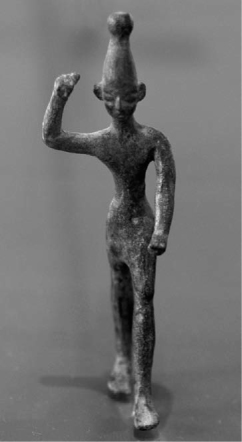Middle Eastern MythologiesThe Hebrews and Canaanites |
What is the Baal Cycle? |
The Baal Cycle is to the Baal religion what the New Testament is to Christians or the Enuma Elish to the Babylonians. It begins with the demand of the old water god Yamm—perhaps a male equivalent of the Babylonian Tiamat—that Baal accept him as the supreme deity. Strangely, the high god El supports Yamm against his son and rival. A parallel exists in Hittite mythology when the god Kumarbi commissions Ullikummi to fight against Tesub, his son and rival for kingship. Baal defeats Yamm as Marduk had defeated Tiamat, and the goddess Ashtart hails him as the new king and conqueror. El now allows a magnificent temple to be built in Baal’s honor, a metaphor in itself, like Yahweh’s temple in Jerusalem, of a new creation based on new principles.
An argument develops during the building of the temple between the architect, who wanted a window in the building, and Baal who, believing in the old superstition that death enters a home through a window, did not want one. Only much later, after many military victories does Baal agree to the window, and, of course, Death (Mot) enters.
The final and most important part of the cycle narrates the struggle between Baal and Mot (Life and Death). Baal cannot refuse Mot’s invitation to visit the Underworld. After celebrating his fertility aspect by mating eighty-eight times with a young cow, the de facto Bull of Heaven, taking his children and storm/weather god powers with him, enters the Underworld and, in effect, dies to the world. Deprived of fertility, the world dries up. It is Baal’s sister and sometimes consort Anat who confronts Mot, who says he has chopped up Baal and “sowed” him in the fields. Anat wins her struggle with Mot and, reflecting the mystery of fertility and agriculture itself, the dying god returns as new life, and the world is renewed. Every seven years, however, the war between Mot and Baal-Anat resumes.

A bronze figurine of the Babylonian god Baal that was buried in ancient Ugarit in what is now Syria.
